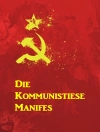Proton-coupled electron transfer (PCET) is emerging as an important new class of reactions and, over the past decade, great strides have been made in our understanding of them. PCET reactions are studied in many branches of chemistry and are omnipresent in biological processes. This book covers recent developments from both the theoretical and experimental points of view. It concentrates on the importance of PCET in biological systems and for bioenergetic conversion. The oxidation of water in Photosystem II to produce oxygen, and the reduction of protons to hydrogen by hydrogenase, for energy storage gets particular emphasis. Chemical reactivity is currently explained in terms of several scientific principles. One of them is the bond-breaking-bond-forming process and is conceptually based on potential energy surfaces. Another incorporates the role of Franck-Condon factors resulting from the overlap of vibrational wavefunctions. A third, the so-called solvent reorganization, involves solvent configuration around a charged species. PCET brings together such concepts and links them to quantum mechanical tunnelling of the electron particle. This book uses personal accounts of experimental examples to provide additional insight on this important topic. It starts by presenting a general overview of the main theoretical approaches and experimental applications. The chapters then go on to cover topics including: the application of the Marcus Cross Relation; the solvation of ionic systems; experimental approaches in biological redox systems; metal ion-coupled electron transfer, and electrochemical concerted proton-electron transfers.
Inhaltsverzeichnis
Proton-coupled electron transfer: introduction and state-of-the-art;
Application of the Marcus Cross Relation to proton-coupled electron transfer/hydrogen atom transfer reactions;
Theoretical and experimental criteria for proton-coupled electron transfer;
On the solvation of ionic systems;
Experimental approaches towards proton-coupled electron transfer reactions in biological redox systems;
Metal ion-coupled electron transfer;
Electrochemical concerted proton-electron transfers. Comparison with homogeneous processes
Über den Autor
Mónica Barroso is a postdoctoral researcher at the University of Coimbra, in the group of Photochemistry and Molecular Spectroscopy. Her current research activity is focused on nanoscaled devices for the conversion of solar energy into clean energies, particularly photoelectrochemical cells for water splitting, and dye-sensitized solar cells. She was a postdoctoral researcher at EPFL (Switzerland), in the group of Prof. Michael Grätzel, where she started her studies on solar hydrogen generation with nanocrystalline semiconductor photoelectrodes, using an interdisciplinary approach that covered the areas of material synthesis and characterization, photochemical and electrochemical studies of light driven reactions, as well as device preparation and performance analysis. Previously, her doctoral research had been focused on the Intersecting/Interacting State Model (ISM) and its application to the estimation of absolute rate constants for atom and proton transfer reactions in gas phase, solution and enzymes, and elucidation of the nature of structure-reactivity relationships. Other research interests include the study of photochemical reactions in solution and supercritical ?uids, proton-coupled electron transfer, and organic-based photovoltaics. She has received 3 research grants from the Portuguese Science Foundation and 2 awards (from Fundação Calouste Gulbenkian and the University of Coimbra).












